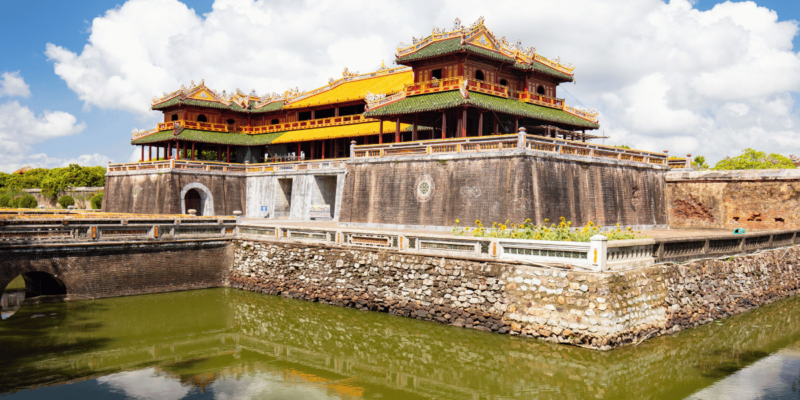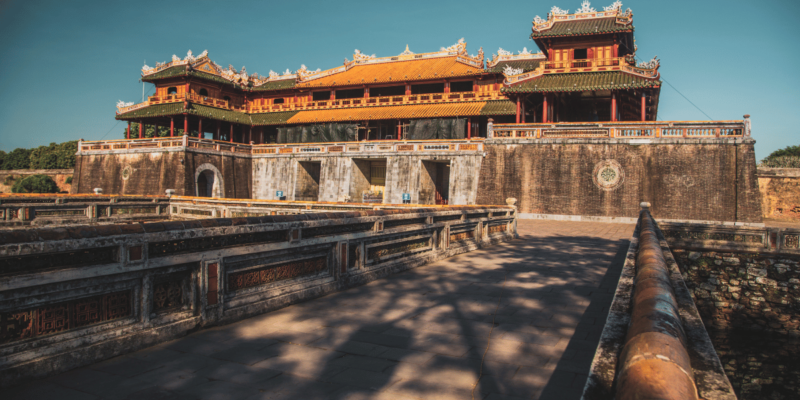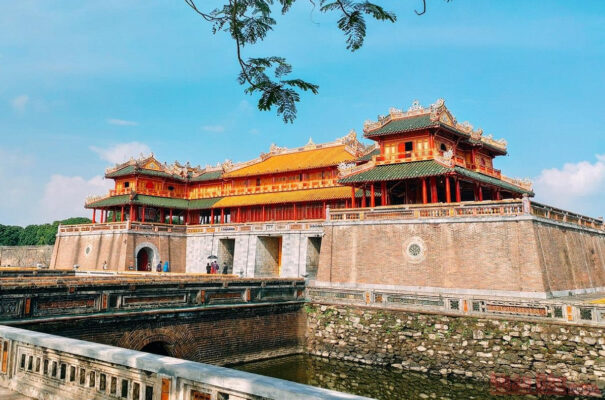Overview of the Citadel The Hue Citadel, a grandiose structure built in the early 19th century, stands as a monument not only to the architectural ambitions of the Nguyen Dynasty but also to the turbulent history of Vietnam itself. It took three decades to construct and spans an area of 6 square kilometers, encompassing three distinct sections: the outer court, the Imperial City, and the innermost Forbidden Purple City.
Structural and Historical Significance The outer court is surrounded by thick brick walls, some reaching ten meters in thickness, designed for both grandeur and defense. This area, filled with open spaces and gardens, served as a buffer protecting the more sacred and administrative sections of the citadel.
Moving inward, the Imperial City was the nerve center of Vietnamese governance, modeled after Beijing’s Forbidden City. This area housed the Dai Trieu Nghi, where significant court ceremonies were held, and the Thai Hoa Palace, the throne hall, where the emperor received high-ranking dignitaries and foreign emissaries.
The core of the citadel was the Forbidden Purple City, accessible only to the royal family and a few select members of the court. It was the private residence of the emperor, his family, and concubines, much shrouded in secrecy and exclusivity.
Destruction and Restoration Unfortunately, the original majesty of the Citadel has been marred by historical conflicts. The French colonial forces caused significant damage, and further destruction occurred during the 1968 Tet Offensive, a key battle during the Vietnam War, which saw fierce fighting within its walls. Despite these adversities, restoration efforts have revived parts of the citadel, bringing back some of its former glory. Notably, the Hien Lam Pavilion and the sacred Nine Dynastic Urns, each representing a Nguyen emperor, have been meticulously restored.
The Museum of Antiquities Adjacent to the citadel, the Museum of Antiquities, housed in the historic Long An Palace, offers visitors a glimpse into the imperial past of Hue. This museum, often confused with a Fine Arts Museum, showcases a range of artifacts from the Nguyen Dynasty, although many are remnants reflecting the extensive looting by French colonizers. The collection, while extensive, suffers from poor maintenance and presentation, diminishing the potential for a fully immersive experience.
Current State and Visitor Experience Today, while parts of the Citadel echo the grandeur of past centuries, others reflect the scars of its war-torn history. Visitors can walk through the restored sections, admire the architectural feats, and reflect on the conflicts that have shaped modern Vietnam. The museum, despite its less-than-optimal state, remains a critical repository of Nguyen artifacts, offering valuable insights into the life and times of the dynasty.
Conclusion The Hue Citadel and its accompanying Museum of Antiquities stand as testaments to Vietnam’s rich yet tumultuous history. They offer not just a journey through the architectural and political legacy of the Nguyen emperors but also a reflection on the resilience of cultural heritage amidst adversity. Visitors to Hue are encouraged to explore these landmarks, not only to appreciate their historical significance but also to support ongoing efforts to preserve and interpret these crucial pieces of Vietnam’s cultural puzzle.




